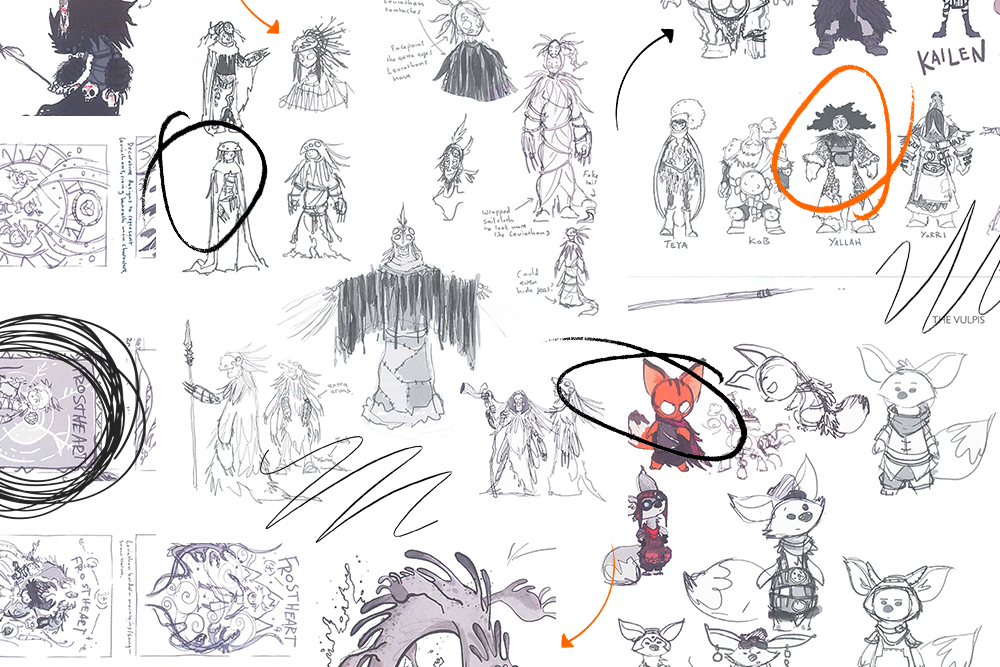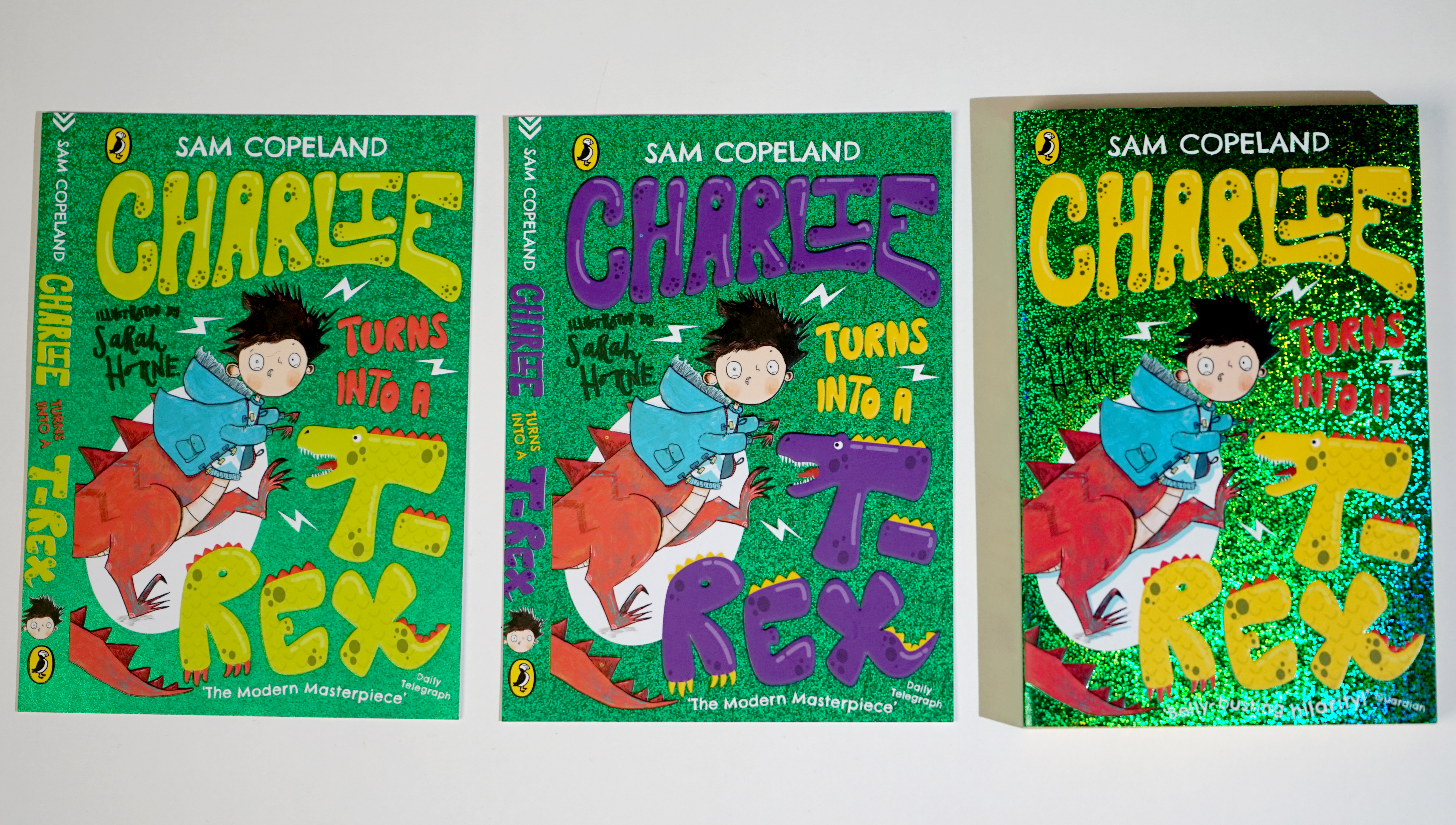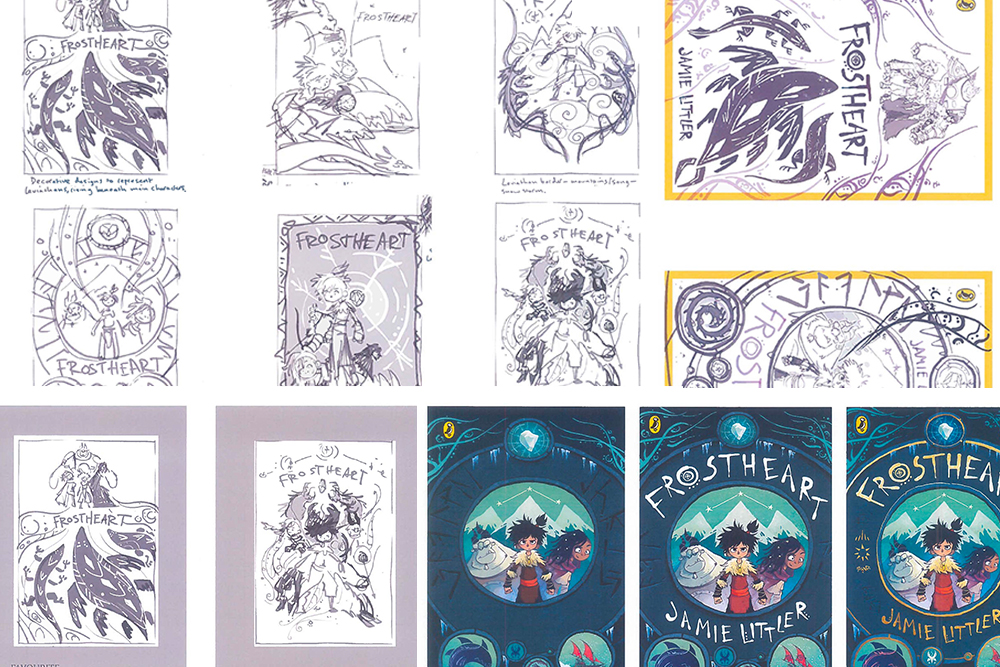- Home |
- Search Results |
- How does a design team work in collaboration?

Anna Billson is a judge for the Children's Category in the 2020 Student Design Awards, and is Art Director for Penguin Random House Children's. Ben Hughes is Deputy Art Director in the Fiction team, and alongside Anna and the creative design team, they create innovative and iconic book covers that attract not just children, but their parents, grandparents, relations and friends, as well as teachers, librarians and retailers.
Here, they reflect together on how collaboration is at the core of everything they do, and how the best designers benefit from critique and feedback.
What is the difference between an Art Director and Designer?
Anna
Because the Penguin Random House Children's division has grown so much, my role as Art Director is to oversee everything that's going on – so I don't do hands-on design anymore, but have a brilliant team of 37 designers that I co-ordinate. I decide who the best designer is to take on different projects, and then work with that person quite closely throughout their process.
If things are going well, it's just a case of celebrating that and saying, ‘Wow, that's amazing!’ And if things aren't going so well, I can be a second eye. You can be so close to a design that you just can't see it anymore, and hopefully I unlock something. Sometimes I come up with the solution; a lot of the time I can't, but I make suggestions that create the solution.
Ben
It’s my job to create the cover from scratch. Anna assigns the project, we then liaise with the editors, read the text and then either search for illustrators, or work up our own designs. We'll sketch up ideas then liaise again with Jacqui, Fiction Art Director to make sure we're on the right track. The proper rough draft is taken to a covers' meeting – if an illustrator will be doing the cover, we go with a sketch that shows the direction we want to take it in. If it's our own design, we'll work up a simple sketch of some of the branding. The covers meeting makes sure everyone's onboard before we properly tackle the design.

How many versions are there of a book cover design?
Anna
If you look at a covers' meeting agenda, the stages a cover is shown at varies hugely. When briefed, we ask, ‘Who is this for? Who's our target audience? Who are the target retailers? What's the competition?’
Then it will come back for the next stage with early concepts – sometimes with illustrator suggestions, before coming back again with the rough draft from the illustrator. After this the typography is designed, because early on we'll just scribble things.
By that time the Sales and Marketing teams may have decided they want a strap line and quotes that you need to fit on, so we'll move everything around to make that work. Then we'll bring it back with the final artwork in place. A cover is in cover meetings a minimum of three times, but sometimes it can be 20, and each time there are often multiple routes and ideas being worked up.
Ben
You have to have a thick skin because your work gets pulled apart. Sometimes you come out of the meeting and they've asked you to change something and it can be your favourite part of the cover! But nine times out of ten, when you start working on it, you realise they were absolutely right, which is why these meetings are so important.
Anna
Sometimes you can come up with a brilliant concept, but actually, that concept doesn't translate into a decent book cover. So however good the concept, you have to let it go and try something else.
But the covers meeting is also amazing, because there's a lot of times I will hold something up and the whole room will go, ‘Wow!’ And that's a great feeling for the designer.
Book covers the Fiction Design team have created
Where do you look for inspiration?
Anna
As a designer, I think you automatically soak up what's around you. You just absorb it from everything; whether you're watching TV, walking down the street, actively looking at a design website, all the shapes, patterns and colours go into your subconscious.
You have all the briefs that you're working on sitting in your head all the time. And then something will just click – you might be on the bus looking out the window and you'll see something and think, ‘that is exactly what I need to do.’
Ben
I've paused the TV during a show because of a shot and it's sparked something for a cover, and annoyed my wife by taking a photo of it! That spark could be from anywhere – an email from a brand and you like the colour combination, if you're walking and you see leaves or trees and love the pattern and texture... I've cut out packaging from crisps and wine bottles because they've used certain foils, you just take it from everything.
How do you collaborate with an illustrator?
Ben
Working with illustrators can shape a whole project. On Frostheart with author-illustrator Jamie Littler I wasn't limited. It wasn't a case of only being able to commission 70 illustrations for this book, as it's his book! He wasn't precious, and let us lay all the text out and actually brief all the illustrations. He only tweaked about five or six throughout the whole book.
When his stuff was coming in, because we'd written little descriptions of the scenes we'd wanted, it was always so much better than what we were depicting or expecting from him. We were just standing there in awe, looking through all the images as they came through the email. It was amazing collaborating with somebody like that.

Anna
Collaboration is part of the whole design process – from working with different teams and illustrators outside the company, to sharing inspiration or unlocking a problem, it helps us create the best possible book covers.
When preparing your Student Design Award entry, be sure to ask other designers and illustrators for their feedback, but why not also ask your target market? Being aware of what children and parents are interested in picking up is the key to your cover.